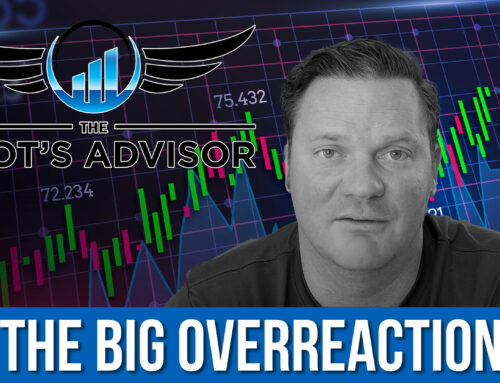UNDERSTANDING RECORD HIGHS
After briefly stumbling the week of September 4, domestic indexes notched significant gains last week and hit record highs. By Friday, the S&P 500 exceeded 2,500 for the first time, the Dow closed at its highest level ever, and the NASDAQ reached an intraday record.[1] Each of the indexes gained well over 1% for the week, with the S&P 500 adding 1.58%, the Dow jumping 2.16%, and the NASDAQ increasing 1.39%.[2] International stocks in the MSCI EAFE also performed well, with a weekly gain of 0.55%.[3]
When looking at these sizable increases, you might expect that positive data and geopolitical calm filled the news last week. Instead, we experienced a number of occurrences that could have derailed stock performance:
- North Korea tested another missile
- London experienced a terrorist attack[4]
- Industrial production declined in August
- Retail sales fell in August[5]
So, why did stocks rise despite these less-than-stellar updates?
Of course, it goes without saying that the markets are incredibly complex. You can rarely, if ever, point to a single reason for their performance. Still, a few details may help put this week’s seemingly incongruous gains into perspective.
1. Investors mostly ignored North Korea and the London bombing. Rather than running to less volatile investments after both geopolitical events, typical havens actually declined. After over a dozen North Korean missile tests and multiple London terror attacks this year, investors may simply be feeling complacent about these occurrences. Instead, many are looking to the Fed’s meeting this week as a market catalyst.[6]
2. Weather affected industrial production and retail sales. Hurricane Harvey likely pushed down both industrial production and retail sales in August, meaning these data-declines may be temporary. In addition, mild weather on the East Coast meant less air conditioner use – decreasing utility output for industrial production.[7]
3. The Consumer Price Index (CPI) jumped. After missing expectations for five months in a row, the CPI – a measure of inflation – beat estimates for August. If upcoming months continue this positive performance, which the hurricanes make more likely, the Federal Reserve may be more likely to raise interest rates in December.[8]
What is on the horizon?
Hurricanes Harvey and Irma could continue to affect economic data in the fourth quarter by driving down retail sales and increasing the Consumer Price Index. We may need to wait a few months before we can see the true trends underlying the data.[9] For now, we will continue to track market performance and investor sentiment, and seek out accurate information amidst the hype.
In the meantime, we also want to help ensure you have the information you need to address another critical topic in the financial world: protecting your identity. With Equifax announcing that its data breach may have affected 143 million customers’ most important personal information, many Americans need to take steps to secure their accounts.[10] To get full details on the breach and its potential impact to you go to www.equifax.com/personal. If you have questions about what steps to take next – and how to help prevent identity theft – please contact us to talk.
ECONOMIC CALENDAR
Monday: Housing Market Index
Tuesday: Housing Starts
Wednesday: Existing Home Sales, FOMC Meeting Announcement
Friday: PMI Composite Flash

These are the views of Platinum Advisor Marketing Strategies, LLC, and not necessarily those of the named representative, Broker dealer or Investment Advisor, and should not be construed as investment advice. Neither the named representative nor the named Broker dealer or Investment Advisor gives tax or legal advice. All information is believed to be from reliable sources; however, we make no representation as to its completeness or accuracy. Please consult your financial advisor for further information.
Investing involves risk including the potential loss of principal. No investment strategy can guarantee a profit or protect against loss in periods of declining values.
Diversification does not guarantee profit nor is it guaranteed to protect assets.
International investing involves special risks such as currency fluctuation and political instability and may not be suitable for all investors.
The Standard & Poor’s 500 (S&P 500) is an unmanaged group of securities considered to be representative of the stock market in general.
The Dow Jones Industrial Average is a price-weighted average of 30 significant stocks traded on the New York Stock Exchange and the NASDAQ. The DJIA was invented by Charles Dow back in 1896.
The Nasdaq Composite is an index of the common stocks and similar securities listed on the NASDAQ stock market and is considered a broad indicator of the performance of stocks of technology companies and growth companies.
The MSCI EAFE Index was created by Morgan Stanley Capital International (MSCI) that serves as a benchmark of the performance in major international equity markets as represented by 21 major MSCI indexes from Europe, Australia and Southeast Asia.
The Dow Jones Corporate Bond Index is a 96-bond index designed to represent the market performance, on a total-return basis, of investment-grade bonds issued by leading U.S. companies. Bonds are equally weighted by maturity cell, industry sector, and the overall index.
The S&P US Investment Grade Corporate Bond Index contains US- and foreign issued investment grade corporate bonds denominated in US dollars. The SPUSCIG launched on April 9, 2013. All information for an index prior to its launch date is back teased, based on the methodology that was in effect on the launch date. Back-tested performance, which is hypothetical and not actual performance, is subject to inherent limitations because it reflects application of an Index methodology and selection of index constituents in hindsight. No theoretical approach can take into account all of the factors in the markets in general and the impact of decisions that might have been made during the actual operation of an index. Actual returns may differ from, and be lower than, back tested returns.
The S&P/Case-Shiller Home Price Indices are the leading measures of U.S. residential real estate prices, tracking changes in the value of residential real estate. The index is made up of measures of real estate prices in 20 cities and weighted to produce the index.
The 10-year Treasury Note represents debt owed by the United States Treasury to the public. Since the U.S. Government is seen as a risk-free borrower, investors use the 10-year Treasury Note as a benchmark for the long-term bond market.
Google Finance is the source for any reference to the performance of an index between two specific periods.
Opinions expressed are subject to change without notice and are not intended as investment advice or to predict future performance.
Past performance does not guarantee future results.
You cannot invest directly in an index.
Consult your financial professional before making any investment decision.
Fixed income investments are subject to various risks including changes in interest rates, credit quality, inflation risk, market valuations, prepayments, corporate events, tax ramifications and other factors.
By clicking on these links, you will leave our server, as they are located on another server. We have not independently verified the information available through this link. The link is provided to you as a matter of interest. Please click on the links below to leave and proceed to the selected site.
- https://www.cnbc.com
- http://performance.morningstar.com
http://performance.morningstar.com
http://performance.morningstar.com - https://www.msci.com
- https://www.bloomberg.com
- https://www.cnbc.com
- https://www.bloomberg.com
http://www.reuters.com - http://www.ftportfolios.com
http://www.ftportfolios.com - https://www.bloomberg.com








